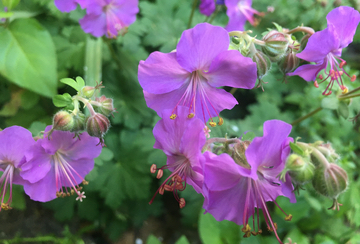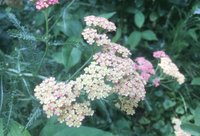
The Beginning of Summer

Although the weather warms up well before that, the solstice officially marks the beginning of summer.
Nature is precisely attuned to the solar calendar, and its rhythms shift to match the changes in daylight hours and azimuth.
There is a subtle, yet noticeable difference in the garden from one day to the next as it reallocates resources from foliage growth to the production of flowers and fruit.
Most vegetables don't even start setting fruit until the end of June, after which they are guaranteed three solid months of hot and sunny weather.
Sweltering weather helps them thrive and yield abundantly, but it also encourages weeds, fungi and other garden pests.
To prevent the spread of mold and mildew, make sure to keep the borders tidy and allow enough air circulation, especially during muggy weather when humidity is at 100%.
Not that the plants dislike sweltering heat, mind you. The hotter and more humid it gets, the happier they are, as long as they get enough water.

The Early Summer Garden

I can never grow accustomed to the abundance and excess of the early summer garden, no matter how many times I witness it.
Plants compete to gain territory and transform the tidy flower border into an unmanageable jungle by June's end.
After bloom, they shed their excess foliage and those dead leaves have to be removed so they don't provide a breeding ground for pests and diseases.
Mid-summer cleaning is a critical task for the June gardening calendar, though it's not as well telegraphed as the ones in spring or fall.
After the early summer bloom is over and the excess foliage is removed, the garden looks sparse again and takes a well-deserved rest.
Don't let that dishearten you: the late summer perennials need that space and renewed energy to grow and look their best.
